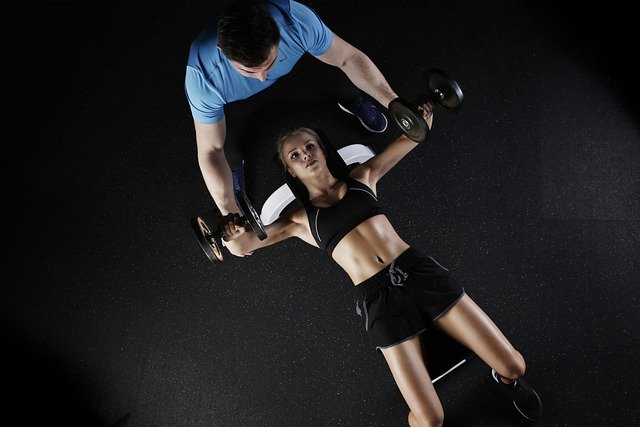Home-based drills to maintain strength with limited facilities
When facilities are limited, deliberate home-based drills preserve strength and movement quality. This article outlines practical exercises, scheduling tips, and technology-assisted methods—from simple bodyweight progressions to video-based coaching—to help athletes and recreational exercisers maintain performance.

Keeping strength and functional capacity with limited facilities is achievable through structured drills, thoughtful progression, and consistent scheduling. This article presents practical home-based exercises that focus on endurance, agility, and resistance adaptations using bodyweight, household items, and low-cost tools. It also addresses recovery, inclusion for different ages and abilities, and how analytics, wearables, and video coaching can support measurable progress.
This article is for informational purposes only and should not be considered medical advice. Please consult a qualified healthcare professional for personalized guidance and treatment.
How can training stay effective at home?
Training at home should prioritize movement quality and progressive overload even without heavy machines. Use variations of push, pull, hinge, squat, and lunge patterns: elevated feet push-ups, single-leg Romanian deadlifts using a water jug, Bulgarian split squats using a chair, and inverted rows under a sturdy table. Incorporate tempo and density approaches for intensity—slower eccentrics, paused reps, or timed circuits—to stimulate muscle adaptation. Coaching cues via remote sessions or pre-recorded video help maintain technique, and sustainable session planning lets athletes balance load and recovery when facilities are inconsistent.
How does recovery fit into home routines?
Recovery is essential to protect gains and reduce injury risk when training environments change. Schedule active recovery sessions—mobility circuits, light aerobic work, and targeted soft tissue work—between harder training days. Wearables can track sleep, heart rate variability, and daily load to guide adjustments; when analytics show elevated fatigue, opt for lower intensity. Nutrition and hydration remain core recovery levers. For coaches and individuals, building recovery into the weekly plan supports consistent progress and helps manage long-term sustainability of training at home.
Can wearables help limited-facility drills?
Wearables and simple analytics offer measurable feedback that makes home training more objective. Heart rate monitors, smartwatches, and accelerometer-based devices can track session intensity, step volume, and estimated caloric burn. Coupling wearable data with short video clips gives a clearer picture: assess tempo, joint angles, and movement patterns alongside workload metrics. Video tools also allow remote coaching corrections. Use data trends rather than single readings—consistency in metrics like resting heart rate or performance times signals meaningful change when traditional gym-based measures aren’t available.
How to adapt drills for youth and inclusion?
Design drills that accommodate different ages, abilities, and access levels to support inclusion. For youth, emphasize play-based strength and motor-skill progression: hop-and-stick landing drills for stability, partner games for coordination, and short agility ladders or taped floor markers to build footwork. Modify intensity for beginners or those with mobility limitations—reduce range of motion, lower repetitions, or extend rest. Clear coaching language, accessible scheduling, and alternatives using household items ensure participation across socioeconomic contexts, promoting long-term engagement and equitable access to training benefits.
How to build endurance and agility without equipment?
Endurance and agility can be trained with minimal space using interval formats and movement complexity. Circuit sessions combining bodyweight squats, step-ups on stairs, shuttle runs in a hallway, and ladder drills with tape create cardiovascular load and refine footwork. Tempo runs, fartlek-style intervals, and short high-intensity intervals (20–60 seconds) maintain aerobic and anaerobic capacity. For agility, reactive drills—partner call-and-go, ball toss changes of direction, or visual-cue ladder steps—improve change-of-direction speed and decision-making. These approaches emphasize sustainability: short, frequent sessions over sporadic long ones.
How to use scheduling, video, and analytics for progress?
Scheduling consistent sessions is central when facilities are limited. Build weekly microcycles with clear themes—strength focus, power/plyometrics, endurance, mobility—and use video recordings to log technique and track improvements. Simple analytics, such as tempo consistency, rep counts, and wearable-derived intensity, create objective markers for progression. Coaches can use brief video reviews to provide targeted feedback and adjust programming based on observed technique or fatigue. Combining scheduling discipline, video evidence, and basic analytics creates a coachable loop that supports measurable gains at home.
Strength-preserving home drills rely on thoughtful programming, incremental progression, and attention to recovery. Incorporating wearables, video, and simple analytics helps quantify work and guide decisions, while inclusive adaptations ensure youth and diverse participants can benefit. With consistent scheduling, varied movement selections, and a focus on technique, limited facilities need not halt strength development.
Sources:





